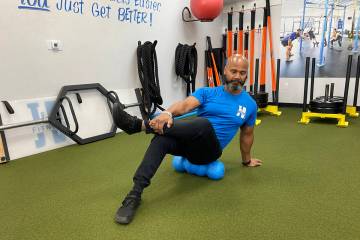Savvy Senior: What to know about all-inclusive retirement communities
Dear Savvy Senior: Can you help me identify some good senior living communities that offer all levels of housing and care from independent living to nursing home care? I am in my late 70s and need to downsize from my current house, but I want my next move to be my last. — One Move Mary
Dear Mary: If you want your next move to be your last, an all-inclusive retirement community — also known as a continuing-care retirement community (or CCRC) — is a great option to consider. Here’s what you should know, along with some tips to help you locate one.
What are CCRCs?
CCRCs differ from other types of senior housing because they provide all levels of housing, services and care in one location.
While the appearance and services of CCRCs can vary greatly, most provide apartments or sometimes single-family homes for active independent seniors. They also offer on-site assisted living for seniors who require help with basic living tasks such as bathing, dressing or going to the bathroom, and nursing home care.
CCRCs also provide a variety of resort-style amenities and services that include community dining halls, exercise facilities, housekeeping and transportation, as well as many social and recreational activities.
But be aware that all these services come at a hefty price. Most communities have entry fees that range from less $100,000 to more than $1 million, plus ongoing monthly fees that generally range from $2,000 to $5,000 for singles ($3,000 to $6,000 for couples) depending on the facility, services and the contract option you choose.
With more than 2,000 CCRCs in operation throughout the U.S, finding a facility that fits your lifestyle, needs and budget will require some legwork. Here are some steps that can help you proceed.
Make a list: To find CCRCs in the area you want to live go to MyLifeSite.net and Caring.com. Once you’ve located a few, call them to find out if they have any vacancies, what they charge and if they provide the types of services you want.
Take a tour: Many CCRCs encourage potential residents to stay overnight and have a few meals in their dining hall. During your visit, notice the upkeep of the facility and talk to residents to see how they like living there. Also, check out the assisted living and nursing facilities, and find out how decisions are made to move residents from one level of care to another.
Do some research: While on your tour, find out who owns the CCRC and get a copy of their most recently audited financial statement and review it. Also find out their occupancy rate. Unless it’s a newer community filling up, occupancy below 80 percent can be a red flag that the facility is having financial or management problems.
To investigate the CCRC’s long-term care services call your state long-term care ombudsman (see LTCombudsman.org) who can tell you if the assisted living and nursing care services had any complaints or problems. You can also use Medicare’s nursing home compare tool at Medicare.gov/care-compare.
Understand the contract and fees: Most CCRCs offer three types of contracts: Life care, or Type A contracts, which have the highest entry fee but cover all levels of long-term care as needed; Type B, or modified contracts, which have lower entry fees but limit long-term care services; and Type C, or fee-for-service contracts, which offer the lowest entrance fees but require you to pay extra for long-term care if you need it.
You also need to find out what yearly price increases you can expect, how much of your entry fee is refundable if you move or die, and what happens if you outlive your financial resources.
To help you sort through all this, consult with your financial adviser or lawyer before committing.
Send your senior questions to: Savvy Senior, P.O. Box 5443, Norman, OK 73070, or visit SavvySenior.org.




























